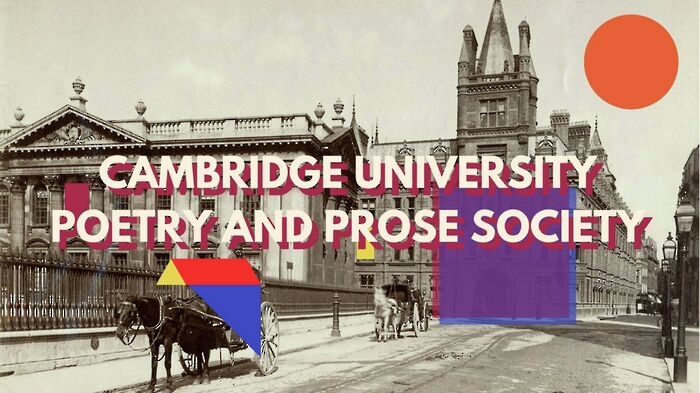Masters and madness
In his final column of the term, Joseph Krol evaluates the link between madness and gifted artists

The production of great art requires a certain emotional state. In transferring from the transient to the static, the process requires a heightened sensation of the world in some regard, and the vision to produce it. The truly great artist is not in any sense a normal person.
Yet, too often this is construed in the popular consciousness as the reductive image of the ‘mad artist’. It is a trivialising view, one that is false much more often than it is true. Yes, perhaps artists have a tendency toward melancholy, as has been noted from Aristotle down. But for all these artists, mental illness remains a great burden rather than a boon. Even van Gogh, perhaps the most famous example, was utterly unable to paint when his illness was at its worst; in one of his depressive spells, he wrote in a letter to his brother that “I am so angry with myself because I cannot do what I should like to do, and at such a moment one feels as if one were lying bound hand and foot at the bottom of a deep dark well”. These are not the words of someone for whom madness was a blessing.
“The truly great artist is not in any sense a normal person”
Francisco Goya presents a similarly harrowing case. He became the pre-eminent Spanish artist of his time at a young age, producing many great works for the royal family. However, in 1793, a sudden illness left him incurably deaf. Though he kept painting successfully – his portraits were at once incredibly pioneering and incredibly popular – he became progressively more isolated. After the horrors he saw during Napoleon’s invasion of Spain in the Peninsular War, he became yet more doubtful of humanity, producing countless grotesque sketches in his Disasters of War series.
In his final years, he retreated to a small house on the outskirts of Madrid called the Quinta del Sordo. In a final artistic spurt, he painted a series of fourteen works, the so-called Black Paintings, straight onto the walls that surrounded him; they have since been transferred to the Prado. They are remarkably dark and depressing; in their composition they have been said to be the first pieces of truly modern art. The Dog shows the title animal engulfed by a broad, brown mass from which he cannot possibly escape; The Witches’ Sabbath depicts the devil terrifying a group of witches, representing the destructive horror of ageing. Maybe the most striking example, however, is the haunting Saturn Devouring his Son, which, of all places, he painted in his dining room.

The eyes – almost distinct from the body – gaze out madly, and yet somehow knowingly. He seems aware of the awfulness of his actions, horrified by these events of his own making; those eyes almost plead with the viewer to forgive them. Saturn is at once cognisant of his own absurdity, and yet quite powerless to do anything about it. I am not quite sure how, but onto these two discs of canvas, Goya has distilled madness perfectly.
Perhaps he never quite went mad, as so many artists do. Rather, Goya, I think, is a rare example of one who remained aware of his mental illness. While in an immensely dark place, it seems he just maintained the ability to keep going artistically, even if he thought the new fruits of his labour were too dark to inflict on the rest of society.
As the old dictum goes, there is a fine line between genius and insanity, but it is a line which many great artists tread. But we cannot romanticise it. Would Goya have been as innovative had he not been so isolated? It is not for us to say. Certainly, however, his success did not lessen his misery.
All art reflects a subtle madness. In looking at a painting, in immersing ourselves in a poem, we are staring into a world that never existed, nor ever will exist. Through art we can bend the flow of time, turn space itself into a tangible plaything to be shaped through our own will, tear reality at the seams, and re-stitch it into a grand tapestry of our own choosing. These are, of course, hardly rational acts, yet they are fundamentally human acts, and are impossible without art.
In these columns, I have argued that great art has an overwhelming relevance to modern life. One can only understand our world by looking outside of it, and art, to me, seems the clearest window. In a world like this, one could not live without it
 Features / Cloudbusting: happy 10th birthday to the building you’ve never heard of30 March 2025
Features / Cloudbusting: happy 10th birthday to the building you’ve never heard of30 March 2025 News / Uni offers AI course for Lloyds employees30 March 2025
News / Uni offers AI course for Lloyds employees30 March 2025 News / Caius clock hand returned nearly 100 years after student prank31 March 2025
News / Caius clock hand returned nearly 100 years after student prank31 March 2025 News / Hundreds of jobs to be cut at Cambridge University Hospitals1 April 2025
News / Hundreds of jobs to be cut at Cambridge University Hospitals1 April 2025 News / Ski mask-wearing teens break into Caius accommodation27 March 2025
News / Ski mask-wearing teens break into Caius accommodation27 March 2025





